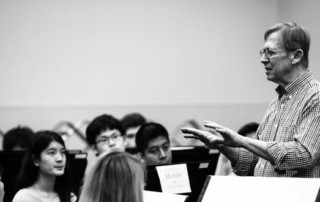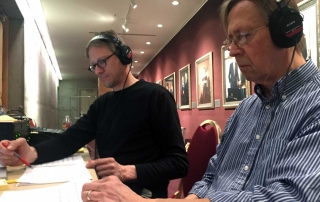Some Thoughts on Choosing Music for Younger Wind Ensembles
These are David’s thoughts on choosing music. You can find the annotated repertoire list here.
I have never been in charge of a school band program, but over the past 40-plus years I have seen hundreds of programs close-up as guest composer. While I do understand the need to teach specific aspects of music, I strongly advise against the use of so-called “educational” music. The core to the development of a band is the committed interest of its players, and that interest is captured by real music.
And what is real music? It is music that you personally love, that excites and interests you. That is the key issue: do you love it? If you do, your students will respond. If you do not love the music you are bringing to your students, there is no way that they will love it, and no way that they will perform with real enthusiasm or conviction. Let your students help you. They are thoroughly plugged into media sources and are totally up on wind band music that they love and want to play.
The biggest inhibiting factor in the selection of music is fear: my band can’t. I have seen it time and time again: the biggest inhibitor of the ability of a band to play is the conductor’s fear of failure – my band can’t. The grading system offers some guidelines, but these are not a rigid box. Look first to the music that you love, then begin to plot how you can […]

